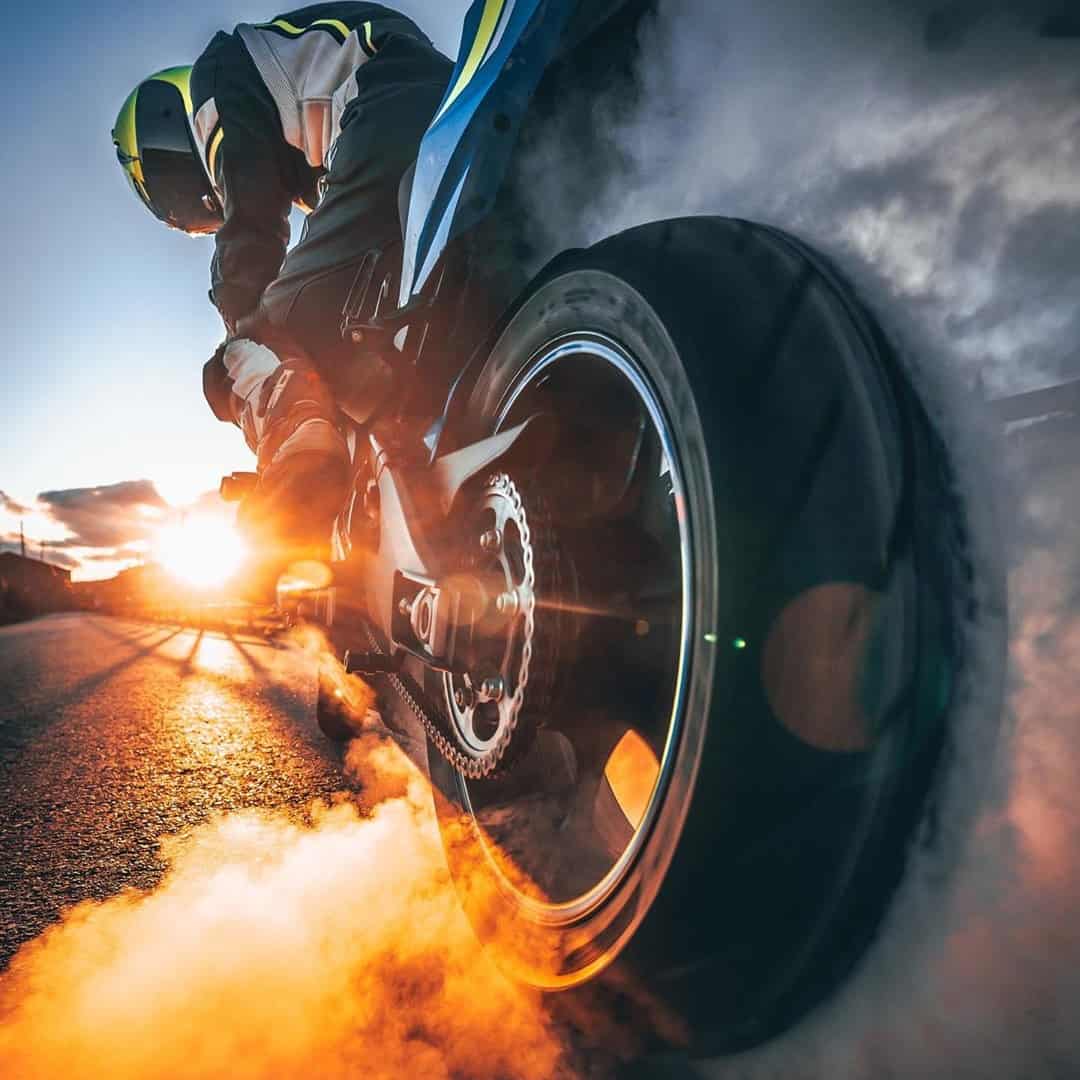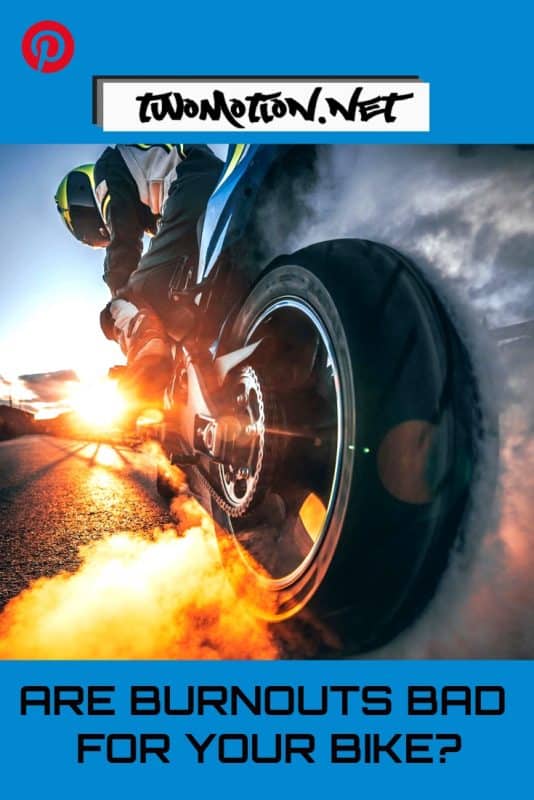Though it might seem like burnouts could be harmful to your bike, it’s actually quite safe if done right. But it could cause some other problems which you might not have thought of like rim and debris damage. Also, a full burnout on a new tire takes too long for the engine to cool while stationary.
Overview
In this article, we discuss whether burnouts are bad for your motorcycle or not and how to make sure you are doing it right.
We will discuss the following:
- When burnouts are not bad for your bike
- When burnouts are bad for your bike
- How to do a burnout
- How to do a rolling burnout
When burnouts are not bad for your bike
Alright, so there are a lot of stuff that you can do to cause damage to your bike but if you are doing it right, you shouldn’t have to worry too much.
Firstly, if you are doing a burnout for short periods of time, it shouldn’t cause damage to your engine. But, this is assuming that the engine isn’t already too hot or too cold.
It would probably be best to let the engine warm up to about 45°C to 50° (113°F to 122°F) before starting a burnout. You should be done with your burnout not too long after you reach 90°C (194°F).
So this basically means that you can only safely do a full burnout with an old tire. Because you’re very unlikely to pop a new tire by that time. But you could extend this time by doing a rolling burnout.
Just so you know, the idea of a rolling burnout is not to pop the tire. In other words, rolling burnouts should not be full burnouts as you could easily crash when the tire does pop. Also, not on an old tire.
Alright the next thing is when you are not using your clutch. Get the tire spinning and then LEAVE IT! There’s no point in screwing up a tire and your clutch.
Next; if you have full control of your bike. You’ve probably seen many videos of people losing control and riding into a car or tree or something. If you are doing this for the first time, start out against a wall but keep using the front brake though.
So overall, if you make sure your engine doesn’t overheat, you don’t play around with the clutch and you have control of your bike, then you should be fairly safe and it shouldn’t be all that bad to do a burnout.
When burnouts are bad for your bike
As I’ve mention before your engine and clutch are the most important things to protect. But what else can go wrong?
You could damage the rim if you don’t stop in time. For first timers, this is why we look back at the rear tire most of the time.
Following up on this, debris from the tire could wind up in the chain or accumulate on parts of the engine that is hot. You could end up damaging the chin, sprockets or both. In the worst case scenario, your bike could catch fire.
Although, when doing a full burnout on an old tire, you’re probably not going to have to deal with a fire if it’s a short period of time (but still possible). This is just because old tires don’t last long enough to build up the heat.
Another thing that many fail to do is control the engine speed. You don’t want to have the engine limiting at 11,000 rpm or whatever. Besides sounding stupid loud, it’s annoying and other bikers will probably cut your engine (the red switch) if they are around.
Fact is, limiting for too long can cause damage to the engine.
There’s probably a ton of other dumb-ass stuff you can do to damage your bike but this probably covers most of the important stuff.
How to do a burnout
How to do a rolling burnout
Final words
Before you go trying rolling burnouts, learn how to do a normal one properly and the go on to the rolling burnouts. Either way, hope you found this article useful and enjoyable.
Featured image by @angelmasgas on Instagram.
I always try to keep my articles interesting and informative. And I’m always thankful when they are shared on social media platforms or Pinterest.


